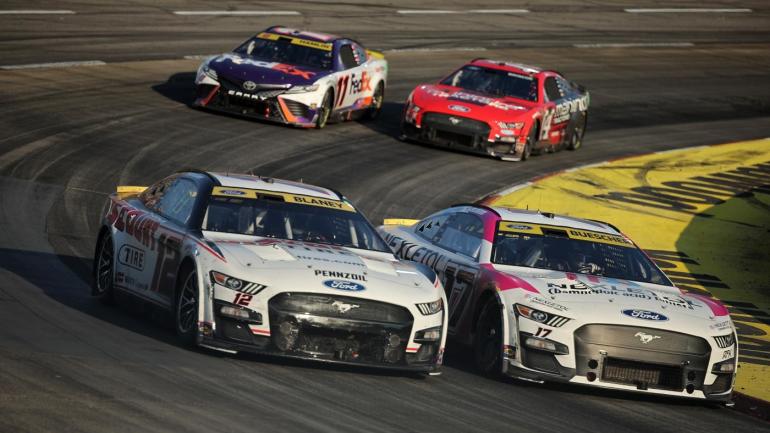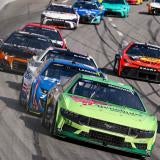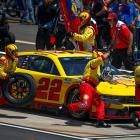
NASCAR on Wednesday announced its rules package for short tracks and road courses for the 2024 Cup Series season, implementing several aerodynamic changes aimed at improving the racing product on those circuits. The changes, which derived largely from an early December test at Phoenix Raceway, will be introduced starting with the fourth race of the season at Phoenix in March.
The changes for the rules package in 2024 are as follows:
- NASCAR has introduced a simplified rear diffuser with fewer vertical strakes and a strake-free engine panel while also retaining the splitter stuffers featured in the 2023 rules package. These changes will reduce front downforce on each car, bettering the ability to race in traffic.
- To compensate for the reduction of downforce, NASCAR has slightly raised the height of the rear spoiler to three inches. The spoiler will remain the same length across the rear deck.
The aerodynamic changes will be implemented after a wind tunnel test on Feb. 13 and a vehicle test at Phoenix on Feb. 20, which will be used to ensure aero parity across all three manufacturers -- Chevrolet, Ford and Toyota -- and collect data. The changes will not be featured until Phoenix in March, meaning that the season-opening Busch Light Clash at the Los Angeles Coliseum will not feature the updated rules package.
The updated rules package is set to be used at tracks a mile or less in length as well as all road courses, with the exception of two high-banked tracks at Bristol Motor Speedway and Dover Motor Speedway. The door was seemingly left open for the rules package to be used at Bristol and Dover "pending evaluation of how it performs at Phoenix, Richmond and Martinsville Speedway."
The 2024 short track/road course package will use a new diffuser and a 3-inch spoiler (was 2 inches). Bristol and Dover not part of this. Likely a Friday practice for Cup teams at Phoenix for its first race (Clash will be 2023 package). pic.twitter.com/wN2HBBrlUG
— Bob Pockrass (@bobpockrass) January 10, 2024
Speaking to NASCAR.com, Dr. Eric Jacuzzi, the sport's vice president of vehicle performance, felt that the changes tested at Phoenix presented an improvement over the existing rules package, particularly in that the cars performed better in traffic without losing too much rear downforce when yawed out.
"We felt that the car, the drivers would be able to slide around more on the short tracks and really have to be less careful about putting power down," Jacuzzi said. "We felt that would be a benefit, and that was the big takeaway from the driver feedback. At the test, they felt they could really tell that it was more forgiving. They felt they could slide the car, not crazy but certainly much more than they regularly could without having a performance penalty."
December's test at Phoenix also centered around greater thickness in Goodyear tire compounds, which should allow for softer tire compounds and allow for greater fall-off over the course of a run. While the 2024 rule changes do not include any gearbox changes to eliminate shifting -- a contributing factor to some lackluster races on short tracks and road courses due to the ability to go from fourth to fifth gear -- Jacuzzi stated there is "work ongoing on what can be done there."






















